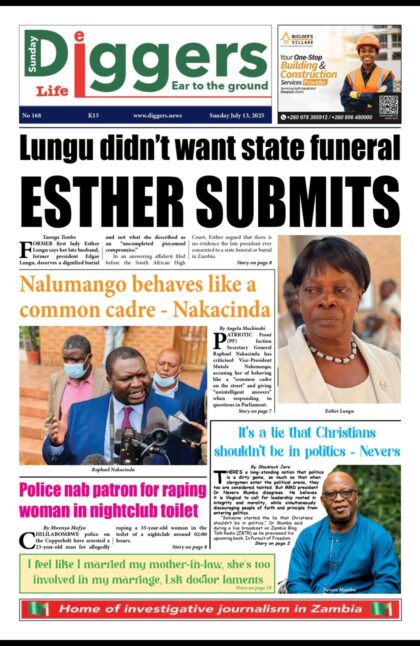The Food Reserve Agency (FRA) says the 2018 crop marketing season will be challenging in Zambia given the drop in maize production compared to the regional average.
But FRA board chairperson Joe Hantebe Simachela says the country will still remain food secure despite the drastic drop in the country’s maize output this year.
Meanwhile, the agency announced that they will buy a 50Kg bag of white maize for K65 this year, up from K60 last year.
Speaking during a press briefing to announce the agency’s crop marketing arrangements for this year’s crop marketing season, FRA executive director Chola Kafwabulula acknowledged that the reduced maize output, coupled with a low maize price of K65 per 50Kg bag, will pose challenges for the FRA given the bumper harvests recorded in the region.
Zambia’s maize output drastically dropped to below 2.4 million metric tonnes of maize for the 2017-2018 agricultural season down from a bumper harvest of over 3.6 million tonnes produced last year.
“To fully appreciate issues of food security, we need to appreciate what’s obtaining in the region because what is obtaining in the region has got a critical impact on our own food security. Yes, there is a drop this year in our production, and from the reports that we are getting that some neighbouring countries are offering a slightly better price than we are offering as FRA and some of the industry players,” Kafwabulula told journalists at the agency’s head office in Lusaka, Friday.
“And also some of the high production areas; they are actually along the border towns so it is very easy for that reason for maize to move from Zambia where there is a deficit, so for that reason, we are going to have a competitive year. It will not be a very easy year because there is a drop in [maize] production.”
And asked if the FRA felt confident of meeting their 500,000 tonnes target for strategic reserves given the low maize price offered to farmers, Simachela disclosed that the agency is already sitting on 300,000 tonnes.
“Currently, we are holding about 300,000 metric tonnes so, basically, when you look at it realistically, to really meet our strategic reserves, we need to buy just 200,000 tonnes. But we are mandated by our shareholders to buy 500,000 tonnes,” Simachela replied.
“In essence, to attain food security, we only need 200,000 metric tonnes; we know that we are safe and secure for this year. But we will also still go ahead and still try to meet our target of 500,000 tonnes.”
He also hastened to add that measures have been put in place to ensure timely payments to farmers ahead of the FRA’s official entry into the market on or around August 1.
“It is our anticipation, hope and belief that, immediately the marketing season commences, the Treasury will also be at hand to ensure that disbursement of payments to farmers are also made. We have a representative from the Ministry of Finance from the Treasury, and we have that confidence that…we have had engagements with the Ministry of Finance and the Treasury to ensure that allocation of funds is given at an appropriate time,” Simachela added.
Kafwabulula also disclosed that Zambia’s national maize storage capacity has marginally increased to 865,000 tonnes, up from 748,500 tonnes four years ago.
“Our current storage stands at 865,000 metric tonnes. In the last two years, we have managed to put up 27 storage facilities – on the Copperbelt; Eastern Province, Luapula, North-Western Province and Northern Province. So, the 28 sheds have given us an added storage capacity of 117,000 metric tonnes,” Kafwabulula said.
“This, in part, actually explains why the wastage of maize at FRA has actually reduced; the industry allows for approximately four to five per cent of crop wastage. In fact, we are beating the industry standard because at the moment, our crop wastage is actually below 0.5 per cent.”
It was further revealed that the FRA may tap into the export markets after guaranteeing food security and fully satisfying the domestic market first.
“First thing is to make sure that country is food secure; once we do that, we will then, of course, have an audience to those who want to export,” said Simachela.
This year’s export parity price is in the range of US $167 to US $180 per tonne, FRA data shows.
Earlier, Simachela announced that the FRA will be going into the market from August 1 to purchase 500,000 metric tonnes white maize at K65 per 50Kg bag.
Other cash crops will also include 10,000 tonnes of soya beans pegged at K130 per 50Kg bag, while 2,100 tonnes of Paddy Rice will be bought at K70 per 40Kg bag.



















